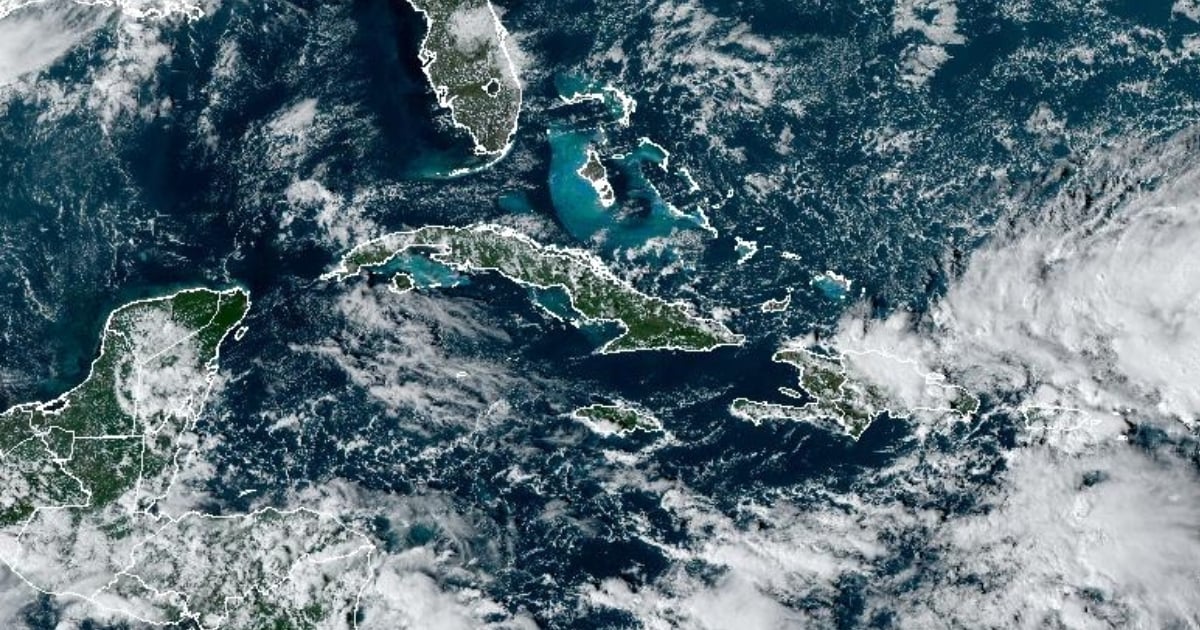
The Cuban Institute of Meteorology (INSMET) issued a Early Warning Advisory on Friday due to atmospheric and oceanic conditions favorable for the formation of a low-pressure area in the Caribbean Sea and the Atlantic Ocean, which could affect the island in the coming days.
In its report, INSMET highlights that a trough extends over the Atlantic Ocean, reaching the vicinity of the Lesser Antilles and the waters north of Puerto Rico and the Dominican Republic. This situation is accompanied by strong clusters of shower activity, rainfall, and thunderstorms.
In addition, an extensive area of low pressure is developing in the southwest Caribbean Sea, where abundant cloud cover has been reported. Although this cloudiness is currently disorganized, forecasting models suggest the potential for the formation of a tropical cyclonic system in the coming days, the statement indicates.
INSMET emphasizes that, regardless of the cyclonic development, rain and thunderstorms are imminent, especially in the eastern region of Cuba, which has already experienced significant rainfall in the last days of October.
Dr. Miriam Teresita Llanes Monteagudo, head of the Forecast Center at INSMET, stated that the organization will maintain constant surveillance of the weather conditions and will issue updates as necessary.
Finally, it is recommended that the public stay informed and follow the instructions of the authorities regarding this weather situation, which is part of the most active hurricane season in the Atlantic in the last 30 years.
Two weeks ago, Hurricane Oscar struck the eastern part of the island, resulting in at least eight fatalities and two missing persons. The affected population reported that they were not warned about the weather phenomenon during a massive blackout that prevented them from accessing media information.
In June, meteorologists from Colorado State University (CSU) warned that the 2024 Atlantic hurricane season was expected to be "extremely active," with 23 named storms and 11 hurricanes, five of which could be category three or higher.
These figures far exceed the average of the last 30 years, which is 14 named storms and seven hurricanes, three of which are category three or higher in the Atlantic.
What do you think?
COMMENTFiled under: